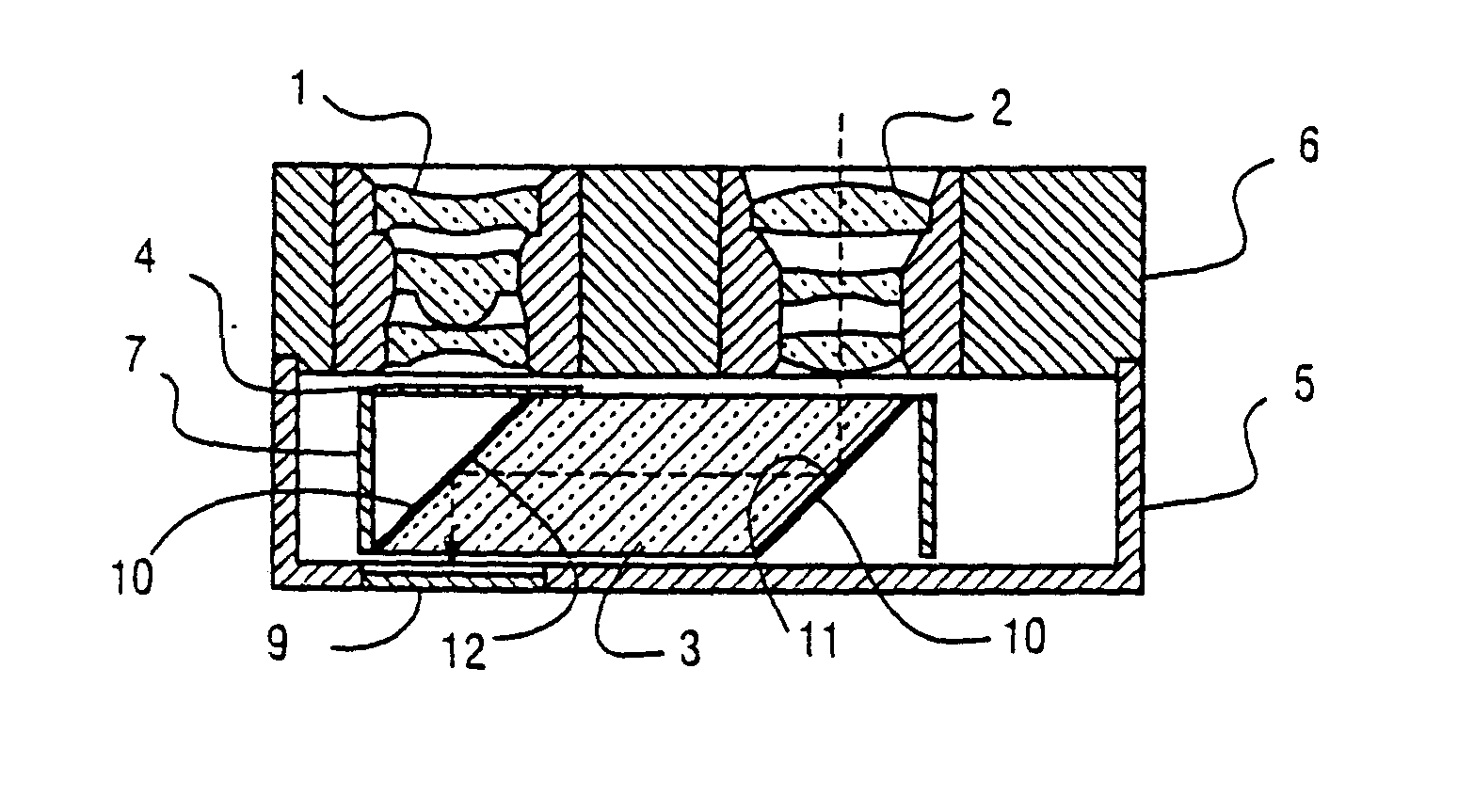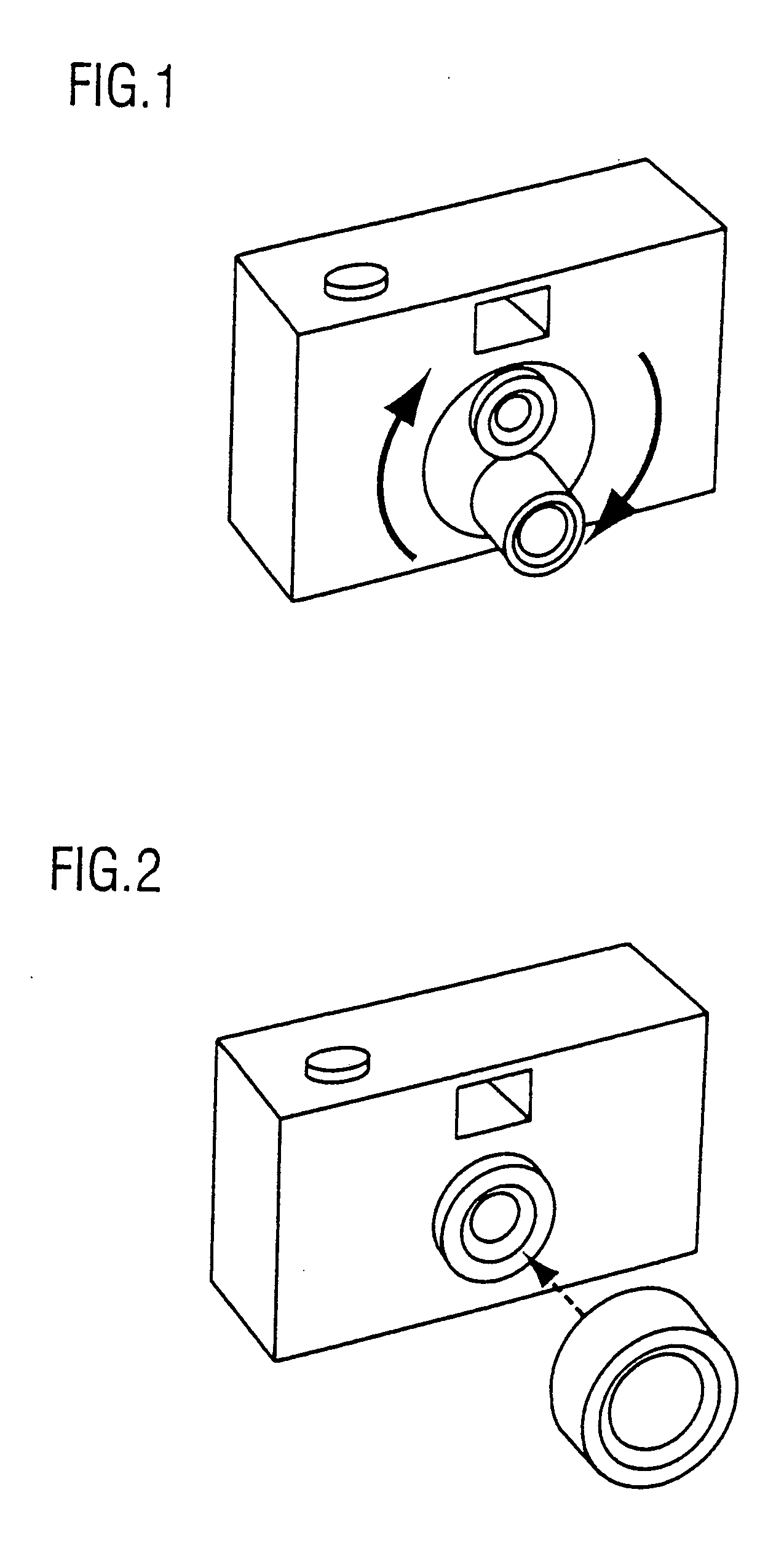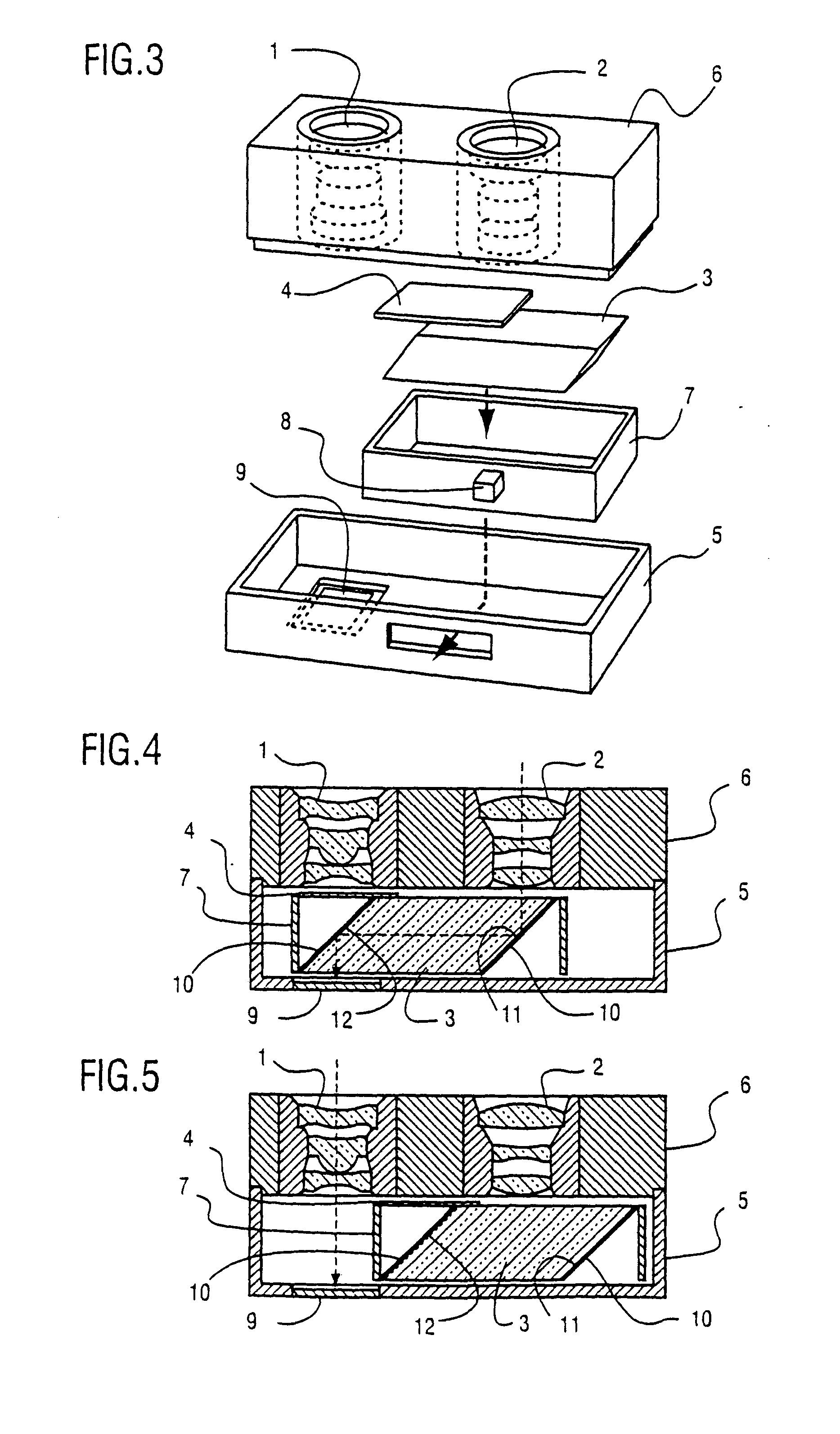Multifocal lens system for digital cameras
a multi-focal lens and digital camera technology, applied in the field of optical systems, can solve the problems of large camera volume, complicated and difficult construction, and relatively expensive zoom lenses, and achieve the effect of reducing the cost of zooming
- Summary
- Abstract
- Description
- Claims
- Application Information
AI Technical Summary
Benefits of technology
Problems solved by technology
Method used
Image
Examples
Embodiment Construction
[0018]FIGS. 3, 4&5 show a preferable embodiment of the present invention, namely the multifocal lens system for digital cameras, which comprises a wide-angle lens (1), a telephoto lens (2), a parallelogram prism (a rhombic shaped prism) (3), a shutter blade (4) attached on said prism, a housing (5), a lens holder (6) and a prism holder (7). The wide-angle lens (1) and the telephoto lens (2) are positioned side by side on top of the lens holder (6) as shown by FIGS. 4 & 5. Inside the housing (5), there is the parallelogram prism (3), which is held by the prism holder (7). The prism holder (7) is movable from side to side at the rear of the wide-angle (1) and telephoto (2) lenses sliding inside the housing (5), and the prism holder (7) can be operated by a knob (8) from side to side from the outside of the housing (5). On the prism holder (7) the shutter blade (4) is provided, and when the wide-angle lens (1) is in use as shown by FIG. 5, the shutter blade (4) and the parallelogram pr...
PUM
 Login to View More
Login to View More Abstract
Description
Claims
Application Information
 Login to View More
Login to View More - R&D
- Intellectual Property
- Life Sciences
- Materials
- Tech Scout
- Unparalleled Data Quality
- Higher Quality Content
- 60% Fewer Hallucinations
Browse by: Latest US Patents, China's latest patents, Technical Efficacy Thesaurus, Application Domain, Technology Topic, Popular Technical Reports.
© 2025 PatSnap. All rights reserved.Legal|Privacy policy|Modern Slavery Act Transparency Statement|Sitemap|About US| Contact US: help@patsnap.com



